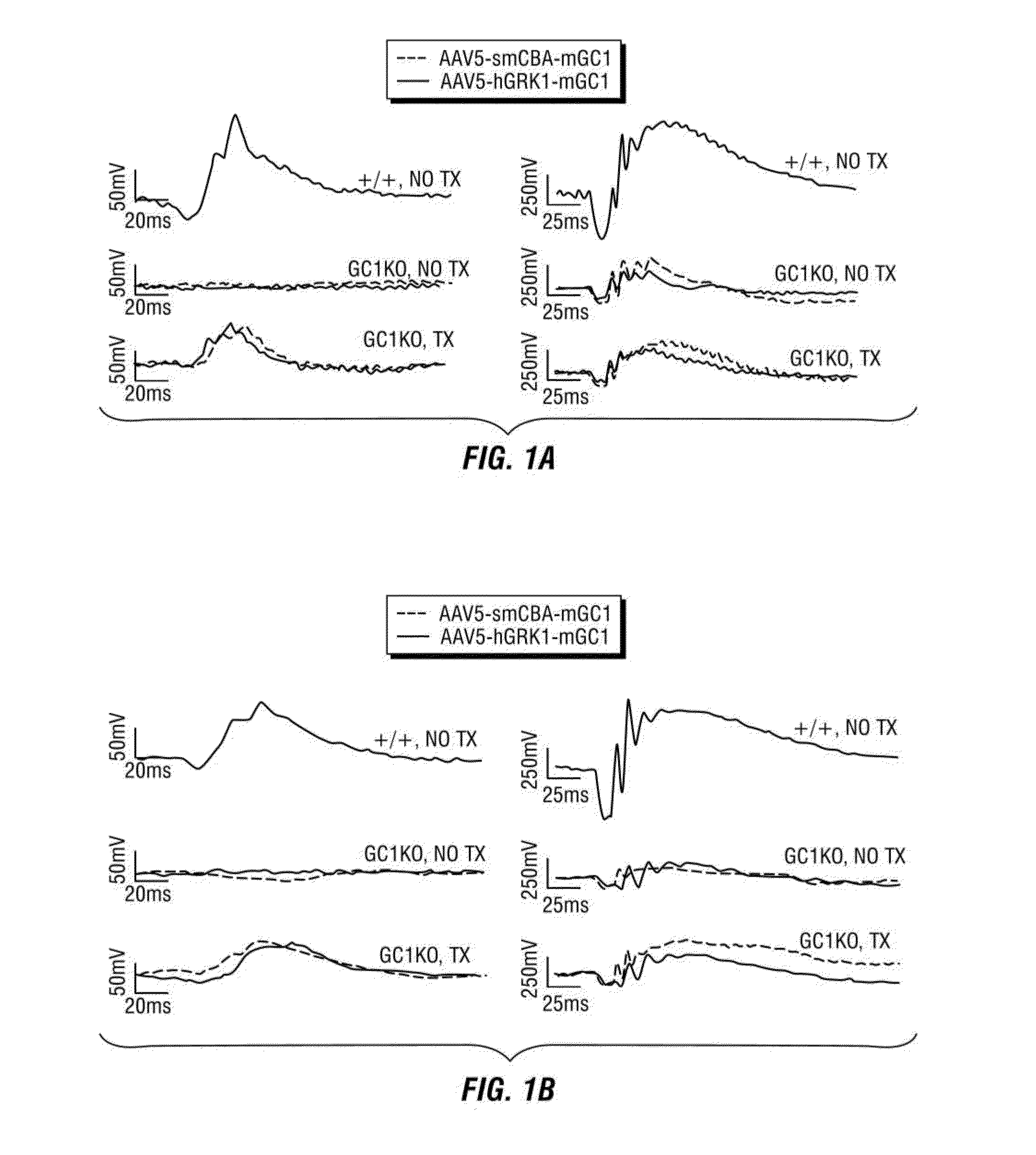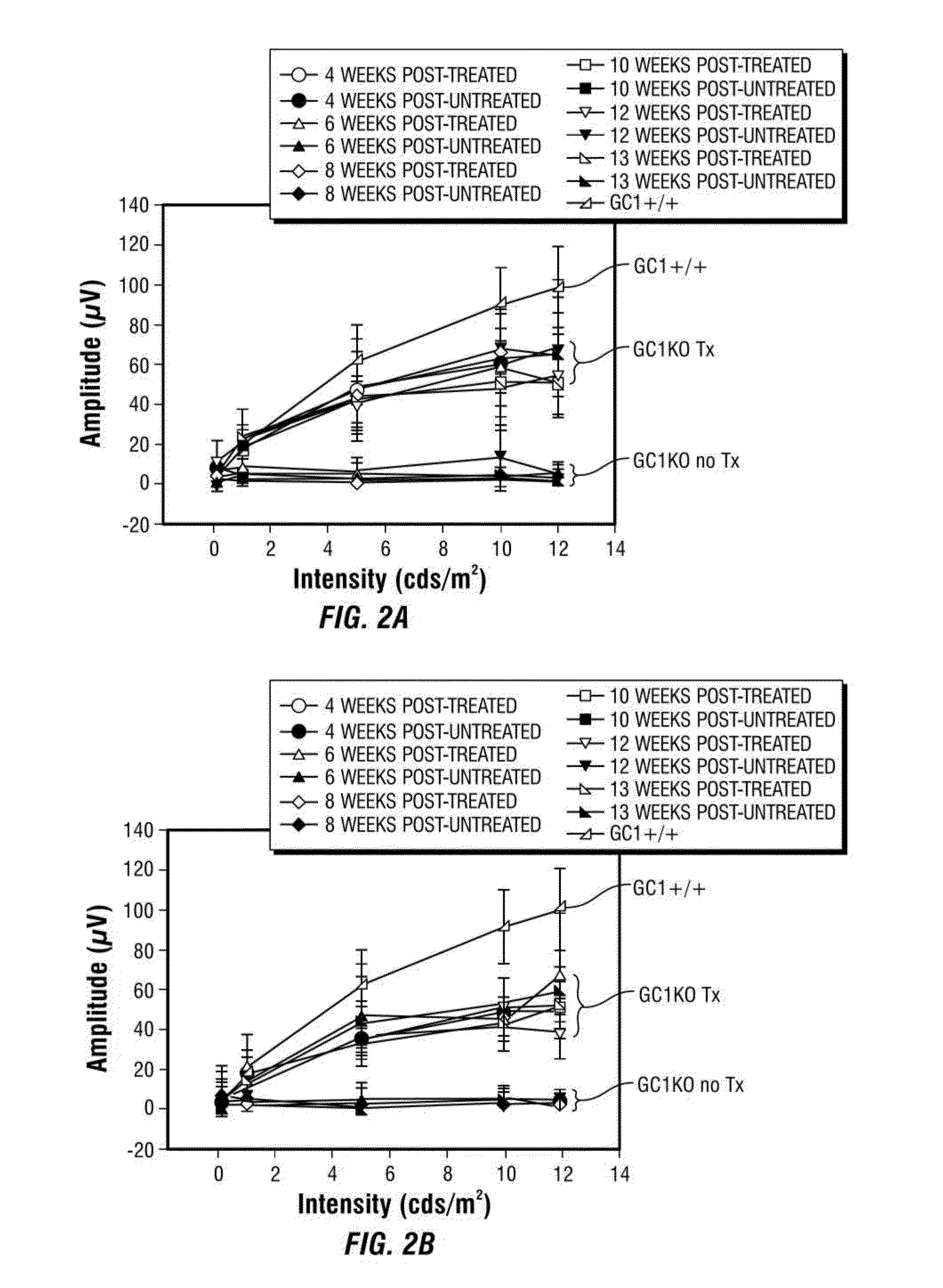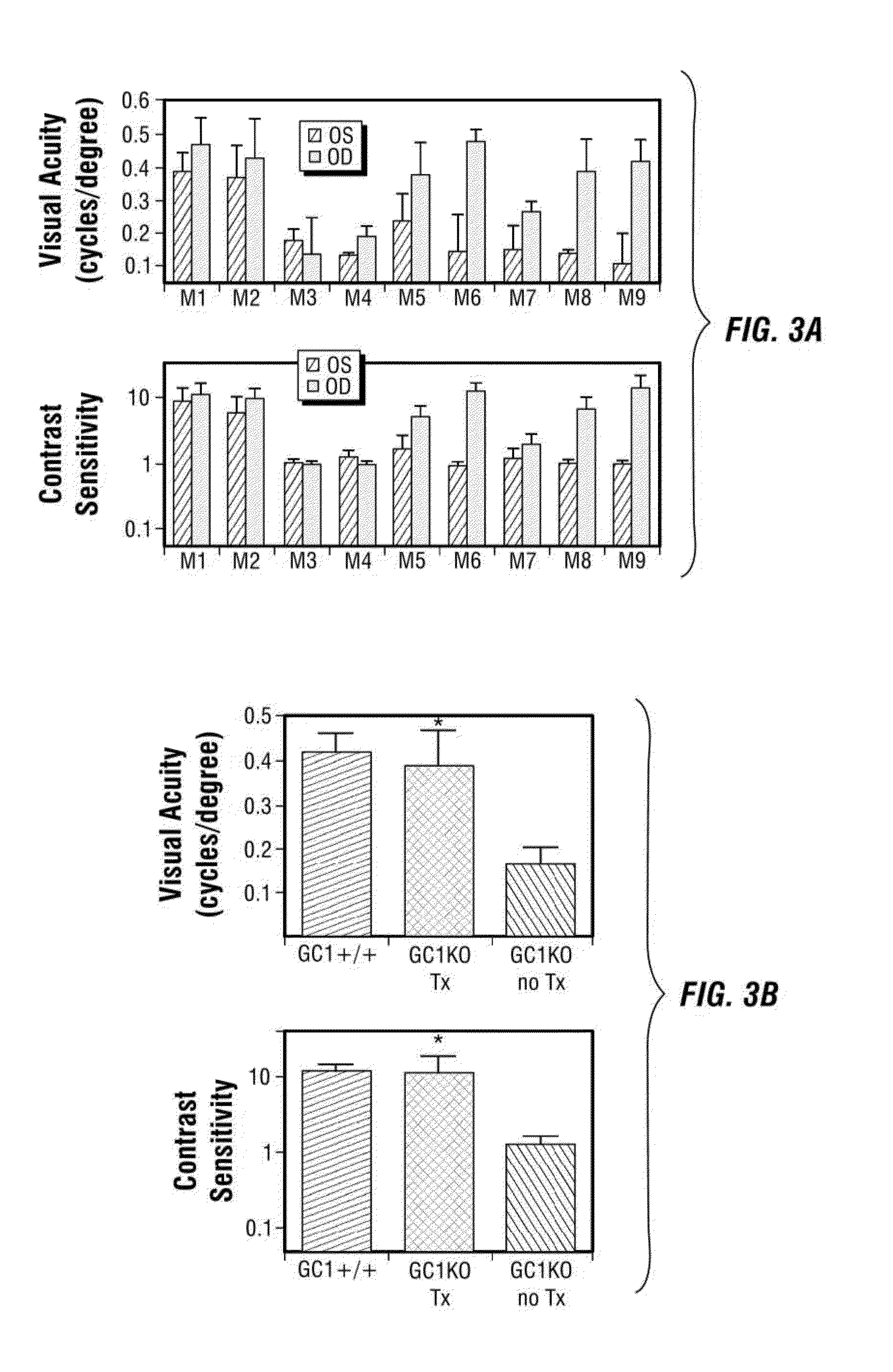rAAV-Guanylate Cyclase Compositions and Methods for Treating Lebers Congenital Amaurosis-1 (LCA1)
- Summary
- Abstract
- Description
- Claims
- Application Information
AI Technical Summary
Benefits of technology
Problems solved by technology
Method used
Image
Examples
example 1
[0185]AAV-Mediated Gene Therapy Restores Visual Function and Behavior to a Mouse Model of LCA1
[0186]In this example, the inventors evaluated whether delivery of a species-specific version of retGC1 (i.e., murine) to cone cells of the postnatal GC1KO mouse could restore function to these cells. Serotype 5 AAV vectors were used to deliver mGC1 to photoreceptors of postnatal day 14 (P 14) GC1KO mice. Electroretinogram (ERG) and behavioral testing were used to assess visual function and immunocytochemistry was used to examine therapeutic transgene expression, cone arrestin localization and cone photoreceptor densities in treated and untreated eyes.
[0187]This example demonstrates that an AAV vector subretinally delivered to one eye of P14 GC1 KO mice facilitated expression of wild type retGC1, restoration of visual function and behavior, and preservation of cone photoreceptors. Four weeks following injection, visual function (ERG) was analyzed in treated and untreated eyes. ERG was perfo...
example 2
Animal Model Containing a GC1 / GC2 Double Knockout
[0222]It is important to note that while only cone photoreceptors are affected in the GC1KO mouse (rods only lose partial function and they do not degenerate), LCA1 patients exhibit rod function loss and rod degeneration. The reason for this difference is speculated to be a species-specific difference in the dependence on GC2, a close relative of GC1 that is expressed in rod photoreceptors. Mouse rods are able to function in the absence of GC1 presumably because GC2 is capable of reconstituting activity; however in humans this is not the case. GC1 is required for rod function, hence the rod degeneration. A GC1 / GC2 double knockout mouse model was generated and shown to have rod function loss (in addition to cone function loss as seen in the GC1 K / O) (Baehr et al., 2007). It was proven through biochemical studies with this model that GC2 is what provides rod function in the absence of GC1. Having said that, it is the GC1 / GC2 double knoc...
example 3
‘Humanized’ Murine Animal Model of LCA1
[0223]This example describes the creation of a “humanized” murine animal model of LCA1. In one embodiment, the mouse model contains a GC1 / GC2 / GCAP1 knockout. GCAP1 is the protein that activates GC1. To create an in-vivo system in which human GC1 expressed from a clinical grade rAAV vector designed for use in humans can be evaluated for function, a GC1 / GC2 / GCAP1 triple knockout hGCAP1 transgenic mouse is utilized. In this mouse, visual function is resorted by rAAV-mediated hGC1 interacting with hGCAP1 only (i.e., no endogenous murine GCAP1 is present). From this study, it is possible to determine whether the human GCAP1 protein is required to stimulate human GC1 activity in the mouse model, and whether function can be restored to cones and rods when the two human polypeptides are reconstituted and expressed in the non-human (i.e., murine) model of the disease. To generate the GC1 / GC2 / GCAP1 triple knockout hGCAP1 transgenic mouse the GC1 / GC2 doub...
PUM
| Property | Measurement | Unit |
|---|---|---|
| Fraction | aaaaa | aaaaa |
| Fraction | aaaaa | aaaaa |
| Time | aaaaa | aaaaa |
Abstract
Description
Claims
Application Information
 Login to View More
Login to View More - R&D
- Intellectual Property
- Life Sciences
- Materials
- Tech Scout
- Unparalleled Data Quality
- Higher Quality Content
- 60% Fewer Hallucinations
Browse by: Latest US Patents, China's latest patents, Technical Efficacy Thesaurus, Application Domain, Technology Topic, Popular Technical Reports.
© 2025 PatSnap. All rights reserved.Legal|Privacy policy|Modern Slavery Act Transparency Statement|Sitemap|About US| Contact US: help@patsnap.com



